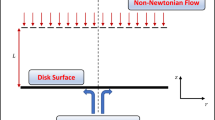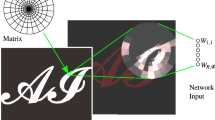Abstract
In this study, hybrid differential evolution algorithms were run to study the three-dimensional mean flow field around straight groynes. The three-dimensional velocity components in a refined mesh around a groyne were measured using an acoustic Doppler velocimeter. Two novel hybrid methods, namely differential evolution-based multilayer perceptron (DE-MLP) and differential evolution-based radial basis function (DE-RBF), were used to simulate the most significant flow features. It was found that the DE-MLP method modeled well the separation of the bottom boundary layer, downward deflection of the upper layers’ streamlines and horseshoe vortex (HSV) development at the upstream groyne face. However, the DE-RBF model was unable to predict the main flow features correctly, especially the HSV system. Both DE-MLP and DE-RBF models predicted the overall flow structure of the separation zone downstream of the groyne well. However, the RBF model could not predict the inflection points in the transverse velocity profiles, which are indicative of a mixing layer bounding the separation zone. The DE-RBF model underestimated the velocity amplification at the groyne head. The DE-MLP model perfectly simulated the distribution of the streamwise cross-stream Reynolds shear stress around the groyne head and also along the turbulent mixing layer.

















Similar content being viewed by others
References
Abbaspour A, Farsadizadeh D, Ghorbani MA (2013) Estimation of hydraulic jump on corrugated bed using artificial neural networks and genetic programming. J WSE 6(2):189–198
Barua DK, Rahman KH (1998) Some aspects of turbulent flow structure in large alluvial rivers. J Hydraul Res 36(2):235–252
Bateni SM, Borghei SM, Jeng DS (2007) Neural network and neuro-fuzzy assessments for scour depth around bridge piers. Eng Appl Artif Intel 20(3):401–414
Begum SA, Fujail AKM, Barbhuiya AK (2011) Radial basis function to predict scour depth around bridge abutment. In: Proceedings of 2nd NCETACS, pp 76–82
Bernard PS, Handler RA (1990) Reynolds stress and the physics of turbulent momentum transport. J Fluid Mech 220:99–124
Bonakdari H, Baghalian S, Nazari F, Fazli M (2011) Numerical analysis and prediction of the velocity field in curved open channel using artificial neural network and genetic Algorithm. Eng Appl Comp Fluid 5(3):384–396
Brevis W, Garcia-Villalba M, Nino Y (2014) Experimental and large eddy simulation study of the flow developed by a sequence of lateral obstacles. Environ Fluid Mech 14(4):873–893
Broomhead DS, Lowe D (1988) Radial basis functions, multi-variable functional interpolation and adaptive networks. DTIC Document
Buhmann MD (2003) Radial basis functions: theory and implementations. Cambridge, London
Chaowanawatee K, Heednacram A (2012) Implementation of cuckoo search in RBF neural network for flood forecasting. Proc CICSyN 2012:22–26
Emiroglu ME, Bilhan O, Kisi O (2011) Neural networks for estimation of discharge capacity of triangular labyrinth side-weir located on a straight channel. Expert Syst Appl 38(1):867–874
Ettema R, Muste M (2004) Scale effects in flume experiments on flow around a spur dike in a flatbed channel. J Hydraul Eng 130(7):635–646
Fang H, Bai J, He G, Zhao H (2014) Calculations of Nonsubmerged groin flow in a shallow open channel by large-eddy simulation. J Eng Mech 140(5):4014016
Garcia CM, Cantero MI, Nino Y, Garcia MH (2005) Turbulence measurements with acoustic doppler velocimeters. J Hydraul Eng 131(12):1062–1073
Houichi L, Dechemi N, Heddam S, Achour B (2013) An evaluation of ANN methods for estimating the lengths of hydraulic jumps in U-shaped channel. J Hydroinf 15(1):147–154
Jamieson EC, Rennie CD, Townsend RD (2012) Turbulence and vorticity in a laboratory channel bend at equilibrium clear-water scour with and without stream barbs. J Hydraul Eng 139(3):259–268
Kan G, Yao C, Li Q, Li Z, Yu Z, Liu Z, Ding L, He X, Liang K (2015) Improving event-based rainfall-runoff simulation using an ensemble artificial neural network based hybrid data-driven model. Stoch Env Res Risk A 29(5):1345–1370
Kirkgoz MS, Ardiclioglu M (1997) Velocity profiles of developing and developed open channel flow. J Hydraul Eng 123(12):1099–1106
Kisi O (2008) The potential of different ANN techniques in evapotranspiration modelling. Hydrol Process 22(14):2449–2460
Kisi O, Cigizoglu HK (2007) Comparison of different ANN techniques in river flow prediction. Civil Eng Environ Syst 24(3):211–231
Klingeman PC, Kehe SM, Owusu YA (1984) Streambank erosion and channel scour manipulation using rockfill dikes and gabions. WRRI Rep Proj 373909:84–179
Koken M (2011) Coherent structures around isolated spur dikes at various approach flow angles. J Hydraul Res 49(6):736–743
Koken M, Constantinescu G (2008) An investigation of the flow and scour mechanisms around isolated spur dikes in a shallow open channel: 1. Conditions corresponding to the initiation of the erosion and deposition process. Water Resour Res 44:W08406. https://doi.org/10.1029/2007WR006489
Koken M, Constantinescu G (2008b) An investigation of the flow and scour mechanisms around isolated spur dikes in a shallow open channel: 2. Conditions corresponding to the final stages of the erosion and deposition process. Water Resour Res 44:W08407. https://doi.org/10.1029/2007WR006491
Koken M, Constantinescu G (2009) An investigation of the dynamics of coherent structures in a turbulent channel flow with a vertical sidewall obstruction. Phys Fluids. https://doi.org/10.1063/1.3207859
Koken M, Constantinescu G (2011) Flow and turbulence structure around a spur dike in a channel with a large scour hole. Water Resour Res 47:W12511. https://doi.org/10.1029/2011WR010710
Koken M, Constantinescu G (2014) Flow and turbulence structure around abutments with sloped sidewalls. J Hydraul Eng 140(7):04014031
Kwan TF (1988) A study of abutment scour. Report No. 451, University of Auckland, Auckland, New Zealand
Levenberg K (1944) A method for the solution of certain non-linear problems in Least-Squares. Q Appl Math 2(2):164–168
Li S, Zhao N, Shi Z, Tang F (2010) Application of artificial neural network on water quality evaluation of Fuyang river in Handan city. in: Proceedings of MACE201, pp 1829–1832
Linder W, Christian H, Mellema W (1964) Missouri River Design Study: laboratory investigation of L-head channel control structures. US Army District, Omaha
Mansouri I, Kisi O (2015) Prediction of debonding strength for masonry elements retrofitted with FRP composites using neuro fuzzy and neural network approaches. Compos B Eng 70:247–255
McCoy A, Constantinescu G, Weber L (2006) Exchange processes in a channel with two vertical emerged obstructions. Flow Turbul Combust 77(1–4):97–126
Najah A, El-Shafie A, Karim OA, El-Shafie AH (2013) Application of artificial neural networks for water quality prediction. Neural Comput Appl 22(1):187–201
Naseri M, Othman F (2012) Determination of the length of hydraulic jumps using artificial neural networks. Adv Eng Softw 48:27–31
Ogiela L, Ogiela MR (2012) Advances in cognitive information systems. Springer, Berlin, Heidelberg COSMOS 17
Ogiela L, Ogiela MR (2014) Data mining and semantic inference in cognitive systems. In: Proceedings of IEEE INCoS 2014, Salerno, Italy
Paik J, Sotiropoulos F (2005) Coherent structure dynamics upstream of a long rectangular block at the side of a large aspect ratio channel. Phys Fluids 17(11):1–14
Pian JX, Wang Z, Li JJ, Zhang R (2014) Water quality soft-sensing model of sewage treatment process combined with the mechanism and RBF. In: Proceedings of VMEIT 2014, Trans Tech Publications, Beijing, pp 1215–1218
Pierini JO, Gomez EA, Telesca L (2012) Prediction of water flows in Colorado River, Argentina. Lat Am J Aquat Res 40(4):872–880
Pinkus A (1999) Approximation theory of the MLP model in neural networks. Acta Numer 8:143–195
Poggio T, Girosi F (1990) Regularization algorithms for learning that are equivalent to multilayer networks. Science 247:978–982
Shen XQ, He TD (2012) Water quality evaluation based on RBF neural network with parameters optimized by PSO algorithm. In: Proceedings of SCET 2012 Wuhan University, China
Shiri J, Nazemi AH, Sadraddini AA, Landeras G, Kisi O, Fakheri Fard A, Marti P (2014) Comparison of heuristic and empirical approaches for estimating reference evapotranspiration from limited inputs in Iran. Comput Electron Agr 108:230–241
Smith M (1993) Neural networks for statistical modeling. Van Nostrand Reinhold, New York
Storn R, Price K (1997) Differential evolution-a simple and efficient heuristic for global optimization over continuous spaces. J Glob Optim 11(4):341–359
Sun S, Yan H, Lipeme Kouyi G (2014) Artificial neural network modelling in simulation of complex flow at open channel junctions based on large data sets. Environ Model Softw 62:178–187
Teruzzi A, Ballio F, Armenio V (2009) Turbulent stresses at the bottom surface near an abutment: laboratory-scale numerical experiment. J Hydraul Eng 135(2):106–117
Wu J, Long J, Liu M (2015) Evolving RBF neural networks for rainfall prediction using hybrid particle swarm optimization and genetic algorithm. Neurocomputing 148:136–142
Xie JC, Wang TP, Zhang JL, Shen Y (2010) A method of flood forecasting of chaotic radial basis function neural network. In: Proceedings of 2nd ISA2010, Wuhan, China
Yang HC, Chang FJ (2005) Modelling combined open channel flow by artificial neural networks. Hydrol Process 19(18):3747–3762
Yossef MFM, de Vriend HJ (2010) Sediment exchange between a river and its groyne fields: mobile-bed experiment. J Hydraul Eng 136(9):610–625
Zadeh MR, Amin S, Khalili D, Singh VP (2010) Daily outflow prediction by multi layer perceptron with logistic sigmoid and tangent sigmoid activation functions. Water Resour Manag 24(11):2673–2688
Zaji AH, Bonakdari H (2014) Performance evaluation of two different neural network and particle swarm optimization methods for prediction of discharge capacity of modified triangular side weirs. Flow Meas Instrum 40:149–156
Zaji AH, Bonakdari H (2015) Application of artificial neural network and genetic programming models for estimating the longitudinal velocity field in open channel junctions. Flow Meas Instrum 41:81–89
Zaji AH, Bonakdari H (2015) Efficient methods for prediction of velocity fields in open channel junctions based on the artifical neural network. Eng Appl Comp Fluid Mech 9(1):220–232
Zounemat-Kermani M, Beheshti AA, Ataie-Ashtiani B, Sabbagh-Yazdi SR (2009) Estimation of current-induced scour depth around pile groups using neural network and adaptive neuro-fuzzy inference system. Appl Soft Comput 9(2):746–755
Funding
All authors declare that there is no funding of the current study.
Author information
Authors and Affiliations
Corresponding author
Ethics declarations
Conflicts of interest
All authors declare that they have no conflict of interest.
Human participants
This article does not contain any studies with human participants performed by any of the authors.
Additional information
Communicated by V. Loia.
Rights and permissions
About this article
Cite this article
Safarzadeh, A., Zaji, A.H. & Bonakdari, H. 3D flow simulation of straight groynes using hybrid DE-based artificial intelligence methods. Soft Comput 23, 3757–3777 (2019). https://doi.org/10.1007/s00500-018-3037-9
Published:
Issue Date:
DOI: https://doi.org/10.1007/s00500-018-3037-9




